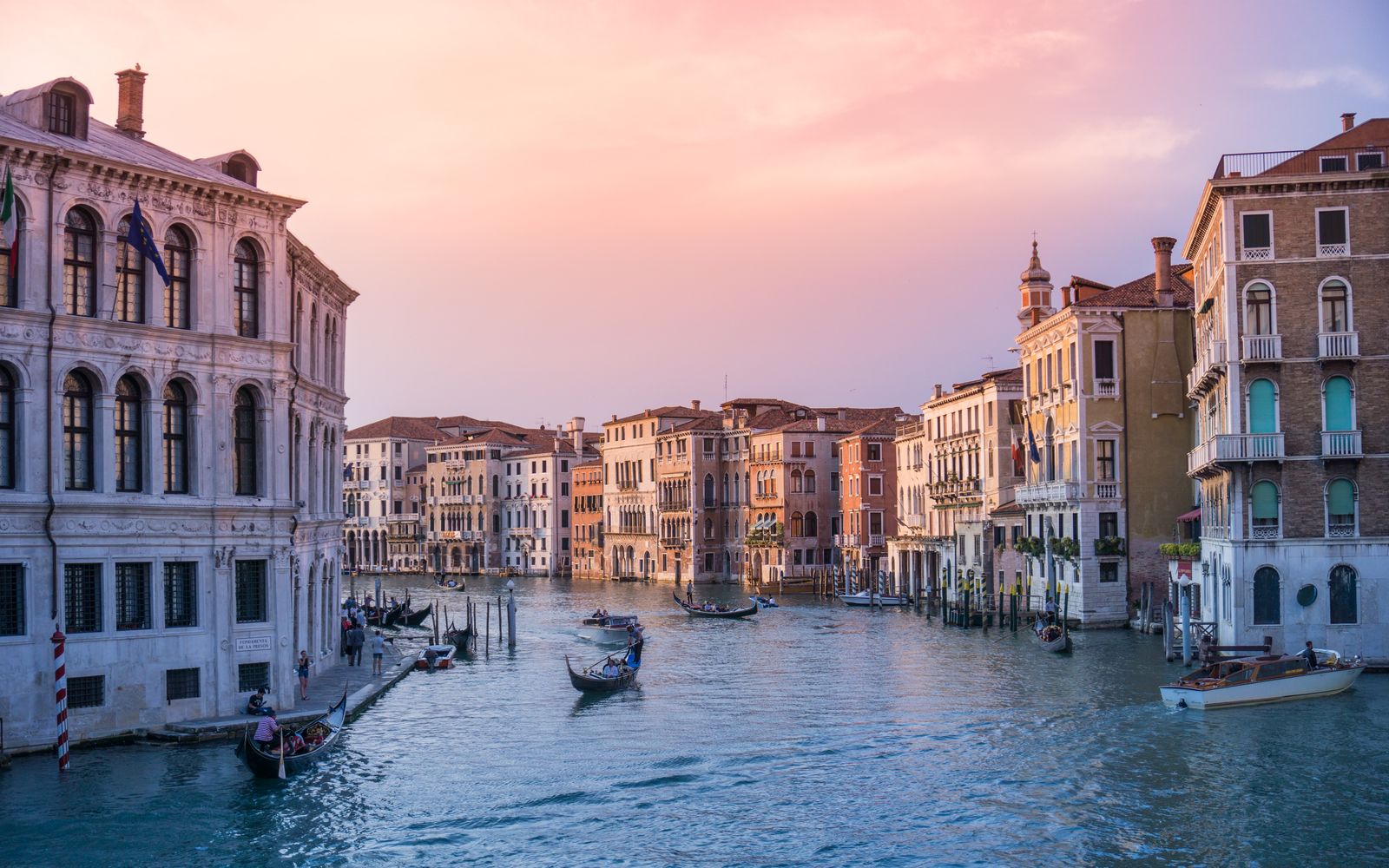Destruction of cultural property in armed conflict is well documented and extensive, and under the 1954 Hague Treaty, it is prohibited unless in “exceptional cases of unavoidable military necessity.” The treaty defines cultural property as physical property important to shared cultural heritage, and such property broadly comprises built infrastructure and works of art. These items, no matter who creates them, are considered to be part of the common cultural heritage of all people and maintained in the present for the benefit of future generations.
Climate risks to cultural property
Malicious actions by bad actors in targeted attacks are not the only risk to cultural property recognized by the international community. In 2006, UNESCO recognized the risks that climate change and its impacts could have on World Heritage Sites (which comprise both cultural property and natural landscapes). The risk of serious damage to cultural sites due to effects of climate change has become evident. Erosion due to sea level rise has threatened serious damage to the iconic moai of Rapa Nui (Easter Island) and also destroyed sections of Kilwa Kisiwani, a historic Tanzanian city. Increasing salinity from sea level rise has endangered the Mosque City of Bagerhat, in Bangladesh. Increasing rainfall has undermined the structural integrity of sites from Edinburgh to the ruins of Chan Chan, in Peru. Some countries’ entire stock of cultural heritage is at risk; per the UN’s Intergovernmental Panel on Climate Change (IPCC), the island nations of the Maldives, Tuvalu, the Marshall Islands, Nauru, and Kiribati may be rendered uninhabitable by rising seas by 2100.
Consequences of culture loss
While the specific mechanisms of destruction may differ, any loss of cultural heritage can negatively impact communities and individuals. Discourse on the malicious destruction of cultural properties recognizes lasting harms; destruction represents an attack on the cultural heritage of a community, depriving individuals of knowledge, identity, and history. According to Oxford anthropology professor Timothy Clark, lack of cultural heritage can impair one’s “sense of belonging and attachment to place” and even lead individuals to become “psychologically adrift and emotionally hopeless.” As such, there is a significant need to preserve cultural properties and the heritage they represent in order to assure human well-being.
Addressing traditional risks to cultural properties
Efforts to catalog and protect World Heritage Sites are currently conducted by UNESCO under the 1972 Cultural Heritage Convention. This convention pertains to both natural and cultural properties, and member states are encouraged to consider protection of national heritage in policy decisions. UNESCO also leads heritage restoration projects: amidst the destruction of cultural property perpetrated by ISIS, UNESCO sponsored a 2016 exhibit in Rome that showcased replicas of destroyed artifacts. In the words of its curator, the exhibit, entitled “Rising from Destruction,” aimed to show that “all that has been destroyed can be reconstructed.” A portion of this project utilized 3D scans to help recreate damaged sculptures from the ancient city of Palmyra, to be returned to Syria.
Calling on local populations to share and document heritage of importance to them is another means of preserving cultural sites. 3D scans were recently used in Ukraine for this purpose, where the Backup Ukraine project mobilized the public to use their cell phones and take 3D scans of important cultural sites in their vicinity, which were then uploaded to a digital library. Upwards of 35,000 sites have been cataloged, and the efforts have been awarded for innovation. As UNESCO has demonstrated, such scans can allow cultural sites to be reconstructed if they are damaged.
Leveraging social media can play a major role in raising awareness as well. The #Unite4Heritage social campaign, which UNESCO launched in 2015, offers a potential framework that empowered local populations to share stories and videos on social media networks. The movement reached 8.8 million people per week at its peak, and sought to invite the public, primarily young people from the Arab world, to share elements of cultural heritage that they felt were important. While the movement has become inactive, with its latest social media content being published in 2018, the strategy it offers could help develop a global awareness of cultural properties at risk from climate change. While the general public may not be well versed in highly technical preservation strategies, Backup Ukraine and #Unite4Heritage represent the value community that members can provide in determining which sites to prioritize protecting.
Integrating climate and culture
For many in the field of preservation, efforts to integrate protection of cultural properties into climate discussion had a watershed moment in 2015 with the Pocantico Call to Action. Signatories, which comprised dozens of preservation scholars and organizations, argued that climate policy did not adequately integrate consideration of the climate change impact on culture, and that climate scientists had not engaged enough with “scholars and guardians” of the past. The aims of Pocantico were bolstered by the creation of the Climate Heritage Network in 2019, which as of 2022 consisted of 250 organizations committed to “scaling up culture-based climate action.”
Deployment of strategies to preserve cultural properties in the face of climate related risks have emerged in recent years. A joint partnership began in 2022 between insurance company Manulife and the National Geographic Society, entitled “Preserving Legacy: A Future for our Past,” which will work to equip communities to anticipate, assess, and act on climate threats to culture. By utilizing local weather data to produce downscaled, location-specific climate change models, the project aims to quantify effects of climate change, such as sea level rise, flooding, heatwaves, and changes to season patterns for important cultural sites. This scientific basis, coupled with local knowledge, could help devise sustainable, culturally appropriate solutions that ensure long term preservation. The project also seeks to foster knowledge sharing between sites to strengthen adaptation plans. The work is starting with ten initial physical sites representing considerable geographic diversity, with two sites in the Americas, four in Asia, two in the Pacific, one in Europe, and one in Africa.
Nature-based solutions
Other cost effective solutions draw from natural ecosystems. The Sundarbans mangrove forest in India and Bangladesh offers coastal flood protection over a 2,200 km (1,367 mi) coastline by reducing the height and speed of waves, benefits that would require US$300 million in man-made infrastructure to achieve. Residents of hundreds of villages have partnered with conservationists and mapped the landscape, raised mangrove saplings, and identified locations to plant new mangroves. For their efforts, the villagers earn several hundred US dollars annually, a meaningful sum in the region. Though governmental support was initially lacking, proven success (reduced erosion) has led to land grants and sapling purchases by government officials.
In a nearby region, Bhitarkanika, planting mangroves has also increased protection from erosion, which is known to be driven by climate change. The village of Badakot planted a 25-acre mangrove forest that markedly reduced rates of erosion, which had previously been a major concern in the area. These efforts were again, as in the Sunderbans, unsupported by government funding. The resident who led the efforts was inspired by his personal observations that areas with mangroves planted were less impacted by a severe cyclone in the area in 1999. A scientific paper studying this same cyclone demonstrated that villages were likely protected by mangrove presence, and noted that the recurring incidence of cyclonic flooding in the region could have meant the mangroves offered protection beyond just the 1999 storm. With climate change likely inducing more intense cyclones, the benefits of mangroves could be considerable in limiting the destruction of flooding. This protection will in turn preserve cultural properties in the villages most affected. The effectiveness of these community-led efforts with nature-based solutions could speak to their applicability in other regions, and further government funding could increase effectiveness and scalability.
Engineering solutions
While community-based, technologically accessible projects such as mangrove planting are financially viable for poorer regions, some nations also have the means to pursue extensive engineering projects. One such project is the US$5.3 billion MOSE floodgates system in the Venice Lagoon. While the project has protected Venice from water levels which would have previously flooded the city, the projections used for construction may be outdated. If water levels rise too far, the gates may eventually need to be activated at all times, which would effectively turn the lagoon into a swamp. The cost of such a project would be prohibitive for many communities, and if initial projections end up being inaccurate, further complications may ensue. The lag time between initial planning and completion of construction could become a financial liability if climate predictions or realities evolve unexpectedly during the process. This is in addition to the usual concerns of corruption and cost overruns. However, the effectiveness of the flood gates to this point in time supports considering similarly large engineering projects as potential solutions where funding is sufficient.
While flood protection projects such as MOSE may be financially inaccessible in many countries, engineering innovations can be applied on smaller scales. The potential for amphibious architecture, which designs buildings to rise with flood waters instead of being damaged or destroyed, offers an illustration. Historic buildings can be retrofitted with buoyant foundations that retain historic exterior appearance and location, while adding flood resiliency. A cost assessment of such technology found that making the requisite modifications was a fraction of potential losses, making it an attractive option for sites in underserved areas. While applicability is constrained by building size, weight, and existing foundation design, cultural sites meeting the engineering criteria could consider this option.
Digitization
The island nation of Tuvalu has also recognized the potential for technological solutions to help preserve its culture, especially when budgetary and logistical complexities are substantial. The government has started an initiative which aims to ensure that Tuvalu will exist in a digital format in the metaverse should its current territory become uninhabitable. As conveyed by Foreign Minister Simon Kofe, the islands of Tuvalu themselves play an important spiritual role in local culture, in a sense representing physical heritage. Kofe identified Tuvaluan land, oceans, and culture as “precious assets” to be moved into the cloud. IT and consulting firm Accenture has been enlisted to develop the virtual model of Tuvalu, and thus far has produced a copy of the Te Afualiku islet, which is expected to be the first Tuvaluan island submerged. High-resolution imagery, drone footage, and software used in video game development has ensured the model is fluid and realistic, thus allowing a dignified representation of the island
The country’s situation is urgent—while other countries are able to move items inland or to higher elevations, Tuvalu has a total area of 15 square kilometers (10 square miles) and a maximum elevation of 4.5 meters (15 feet). These figures make physical relocation of cultural sites infeasible in the long run, and speak to the dire predictions of the IPCC and the severity of risk faced by the country if the effects of climate change are not remedied. Digitization may therefore become the only reasonable way to maintain elements of Tuvaluan culture, and could take advantage of virtual reality to keep Tuvaluan culture vibrant even if it is displaced from its ancestral lands.
Next steps
The increasing consideration of cultural property and heritage in discussions on climate change brings with it the need to carefully develop strategies to protect these sites. Social media can raise awareness of important pieces of cultural property, as can the documentation efforts of organizations such as UNESCO. The combined potential of scientific understandings of climate change, nature-based and artificially engineered damage reduction interventions, and new uses of digital creations such as the metaverse can preserve culture, so long as economic realities are thoughtfully considered. Engaging local communities closely in these efforts, whether to share sentiments about sites of considerable importance or to play a leading role in protection projects, may allow important local knowledge to play a key role in decision making and give respect to meaningful cultural values.
At all stages, the potential for reverberating and devastating impacts if cultural heritage is lost should ground preservation efforts. The consequences of climate change for human societies are severe, leading to increasingly severe weather, food and water insecurities, economic consequences, and geopolitical instabilities. If cultural losses become more prevalent, the added psychological ramifications on cultures around the world may greatly worsen the toll. Only with this understanding can we bolster burgeoning international efforts to place preservation of culture at the forefront of climate mitigation.




